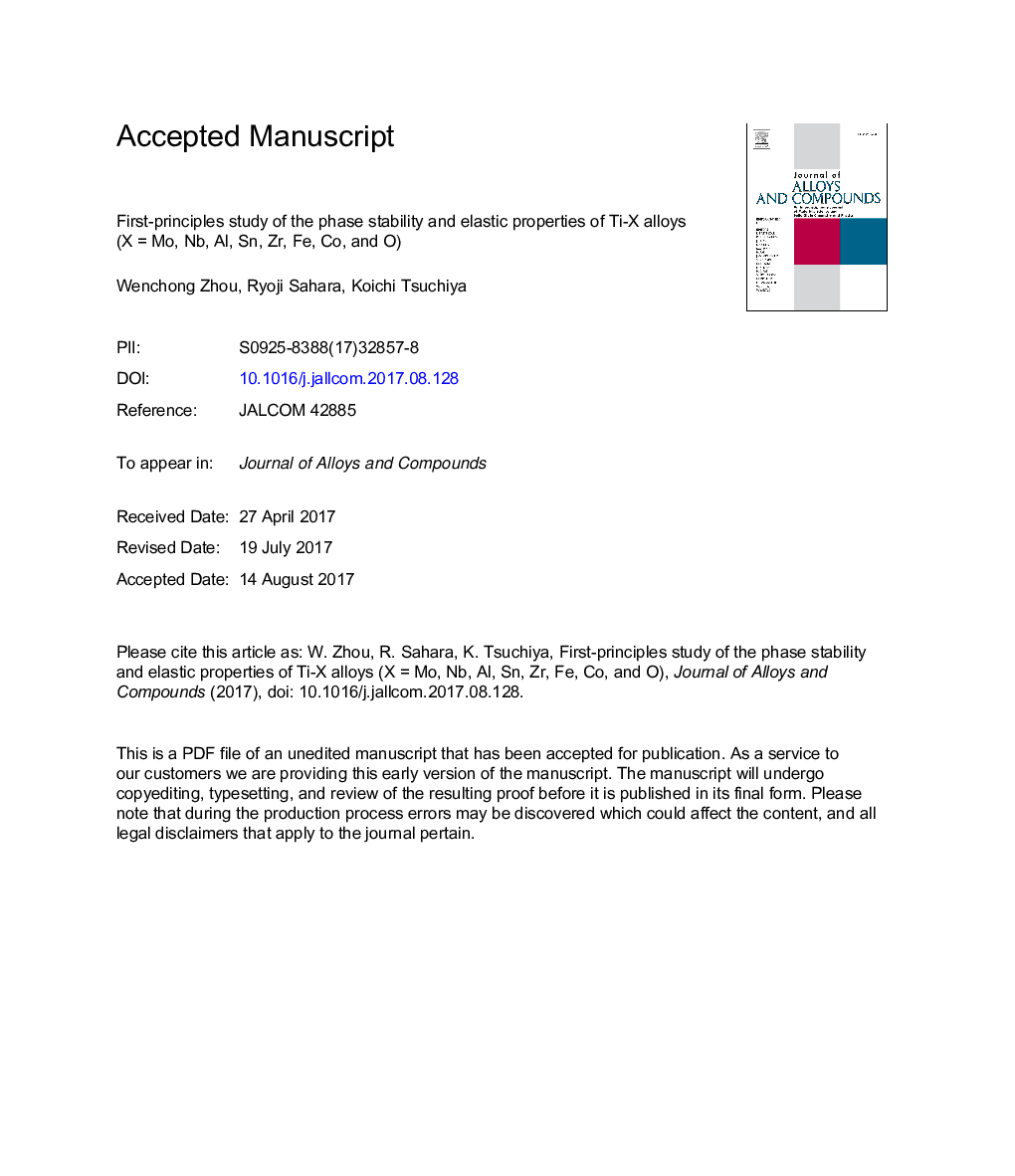| Article ID | Journal | Published Year | Pages | File Type |
|---|---|---|---|---|
| 5458843 | Journal of Alloys and Compounds | 2017 | 63 Pages |
Abstract
The predicted formation energies and elastic properties agrees well with previous experimental and theoretical results. Addition of Mo was found to stabilize the β phase significantly while destabilizing the α phase. Nb was found to be a weaker β-stabilizer. In Ti-Al and Ti-Sn systems, the compounds form preferentially at a higher concentration. Zr shows little effect on the phase stability, thus Zr is a neutral element. For Ti-O systems, the octahedral site is the most stable site for interstitial oxygen in both bcc and hcp structures. The comparison of formation energies showed that O acts as an α stabilizer. Considering the configurational entropy contribution, we concluded that temperature effect can be significant to stabilize the phases. The elastic constants calculation revealed that adding Mo, Nb, Fe, or Co increases the mechanical stability of bcc Ti, whereas bcc Ti-Al, Ti-Sn, and Ti-Zr systems are mechanically unstable for all the calculated concentrations. For their hcp counterparts, Ti-Mo and Ti-Nb have lower mechanical stability than the Ti-Al, Ti-O, and Ti-Sn systems. It was found in the electronic structures calculation that increasing addition of Nb, Mo, Fe, and Co weakens the covalent-like bonding of hcp system and strengthens the metallic bonding of bcc system. This variation of the TDOSs of these Ti alloys explains why the bcc phase becomes more stable than the hcp phase at high concentration. Due to the similarity of electronic structure, Zr does not change the DOS of the bcc and hcp phases significantly: The Fermi level in DOS profile of Ti-Zr was found to be identical to that of pure Ti system. Ti-Al and Ti-Sn alloys keep the covalent-like bonding, which explains why hcp Ti-Al and Ti-Sn are stable.
Related Topics
Physical Sciences and Engineering
Materials Science
Metals and Alloys
Authors
Wenchong Zhou, Ryoji Sahara, Koichi Tsuchiya,
